Poison hemlock identification and control
Conium maculatum
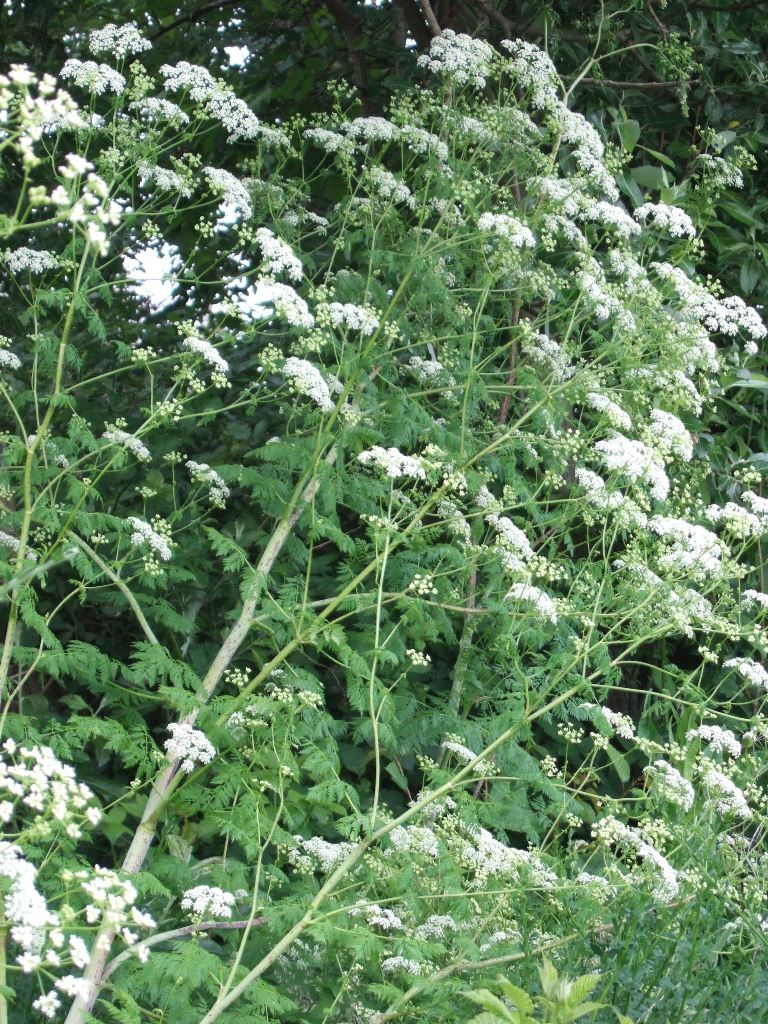
Poison hemlock is a widespread toxic biennial plant in the Carrot Family often found in open sunny areas, fields, vacant lots, and on roadsides. Eating even a small amount of any part of this plant can kill people, livestock, and wildlife. Poison hemlock is required for control on public lands, but private owners are still strongly encouraged to control the plants on their property.
Identification and Look-Alikes
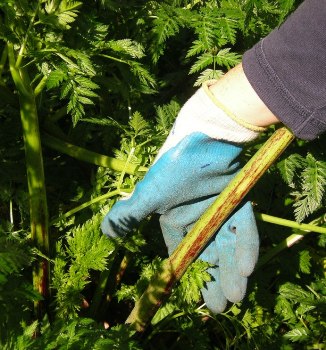
Poison hemlock stems have reddish or purple spots and streaks, are not hairy, and are hollow. Leaves are bright green, fern-like, finely divided, toothed on edges and have a strong musty odor when crushed. Flowers are tiny, white and arranged in small, umbrella-shaped clusters on ends of branched stems.
Poison hemlock is a biennial and germinates throughout the year. First year plants are low-growing and may overwinter in mild climates. Young poison-hemlock plants somewhat resemble carrot plants but can be distinguished by the lack of hairs on the stems and the purple-reddish blotches on the stems.
In late spring, second-year plants reach 6-10 feet tall and produce numerous umbrella-shaped clusters of tiny, white, 5-petaled flowers. Flowering poison-hemlock may be confused with wild carrot (Daucus carota, or Queen Anne's Lace). In contrast with poison-hemlock, wild carrot has one densely packed umbrella-shaped flower cluster on a narrow, hairy stem, usually with one purple flower in the center of the flower cluster and is usually 3 feet tall or less. Wild carrot also flowers later in the summer.
Toxicity
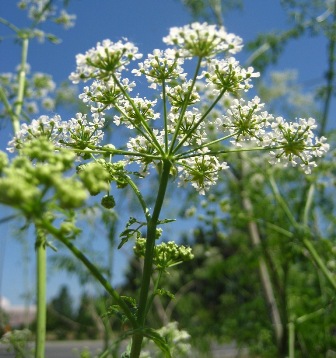
Poison hemlock is acutely toxic to people and animals, with symptoms appearing 20 minutes to three hours after ingestion. All parts of the plant are poisonous and even the dead canes remain toxic for up to three years. The amount of toxin varies and tends to be higher in sunny areas. Eating the plant is the main danger, but it is also toxic to the skin and respiratory system. When controlling poison-hemlock, minimize exposure by wearing gloves and taking frequent breaks when pulling or mowing large amounts of plants. One individual had a severe reaction after pulling plants on a hot day because the toxins were absorbed into her skin.
The typical symptoms for humans include dilation of the pupils, dizziness, and trembling followed by slowing of the heartbeat, paralysis of the central nervous system, muscle paralysis, and death due to respiratory failure. For animals, symptoms include nervous trembling, salivation, lack of coordination, pupil dilation, rapid weak pulse, respiratory paralysis, coma, and sometimes death. For both people and animals, quick treatment can reverse the harm and typically there aren’t noticeable aftereffects. If you suspect poisoning from this plant, call for help immediately because the toxins are fast-acting – for people, call 911 or poison-control at 1-800-222-1222 or for animals, call your veterinarian.
Legal status in King County, Washington
Poison hemlock is a Class B Noxious Weed on the Washington State Noxious Weed List that is selected for required control on public lands and public rights-of-way by the King County Noxious Weed Control Board. On private property, control of poison-hemlock is recommended but not required in King County. For more information about noxious weed regulations and definitions, see Noxious weed lists and laws.
The King County Noxious Weed Control Board encourages all property owners to remove poison hemlock where possible and to avoid introducing it to new landscapes.
What to do if you find this plant in King County, Washington
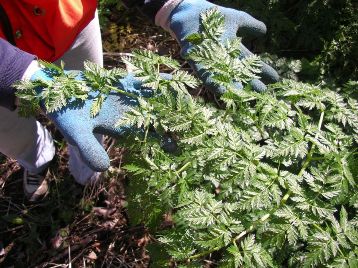
If you find poison-hemlock, please alert the property owner or residents if possible and report it on our Report-a-Weed form. Poison hemlock is required for control on public lands. Although private property owners in King County are not required to control poison-hemlock, we do encourage control where possible, especially where people may encounter it accidentally. If you notice poison-hemlock any place where people are growing food or collecting wild plants, please notify the property manager or agency in charge as soon as possible, or report the location to us and we will alert them. This is especially important in p-patch or community gardens where new gardeners or newcomers to our area may be unfamiliar with this plant. If you are unsure about who to contact, we can help (email us).
Additional information on poison-hemlock
- Poison-hemlock Weed Alert (2.3 Mb, Acrobat file)
- Poison-hemlock alert posters translated into multiple languages (link)
- Washington State Noxious Weed Control Board (external link)
- Cornell University Poison Plants Database (scroll down)
- TNC Weeds Element Stewardship Abstract
Information in other languages
Español (Spanish): Cicuta (Poison hemlock) folleto informativo (pdf 1.62 Mb)
Tiếng Việt (Vietnamese): Cây Cần Độc: poison hemlock (pdf 286 Kb)
中文: 简体版 (Simplified Chinese): 毒芹: poison hemlock (pdf 555 Kb)
Af-Soomaali (Somali): Geedka Sunta ah ee Hemlock: poison hemlock (pdf 2.9 Mb)
русский язык (Russian): Болиголов пятнистый: poison hemlock (pdf 2.9 Mb)
العربية (Arabic): الشوكران السام: poison hemlock (pdf 4.5 Mb)
Poison hemlock photos
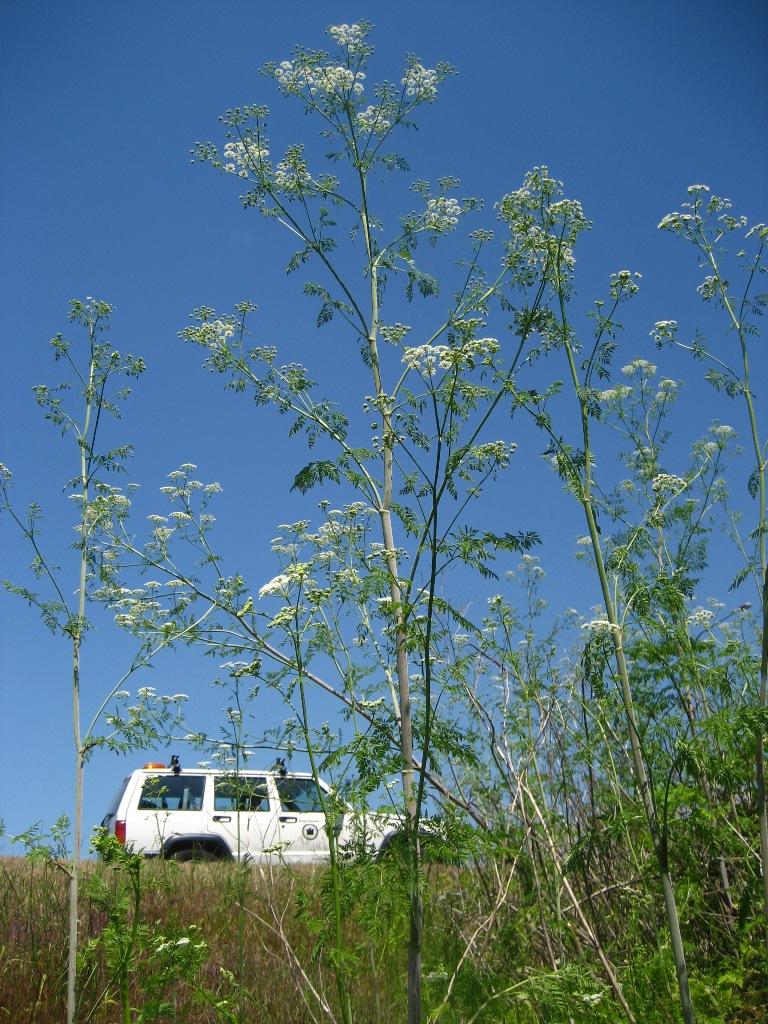
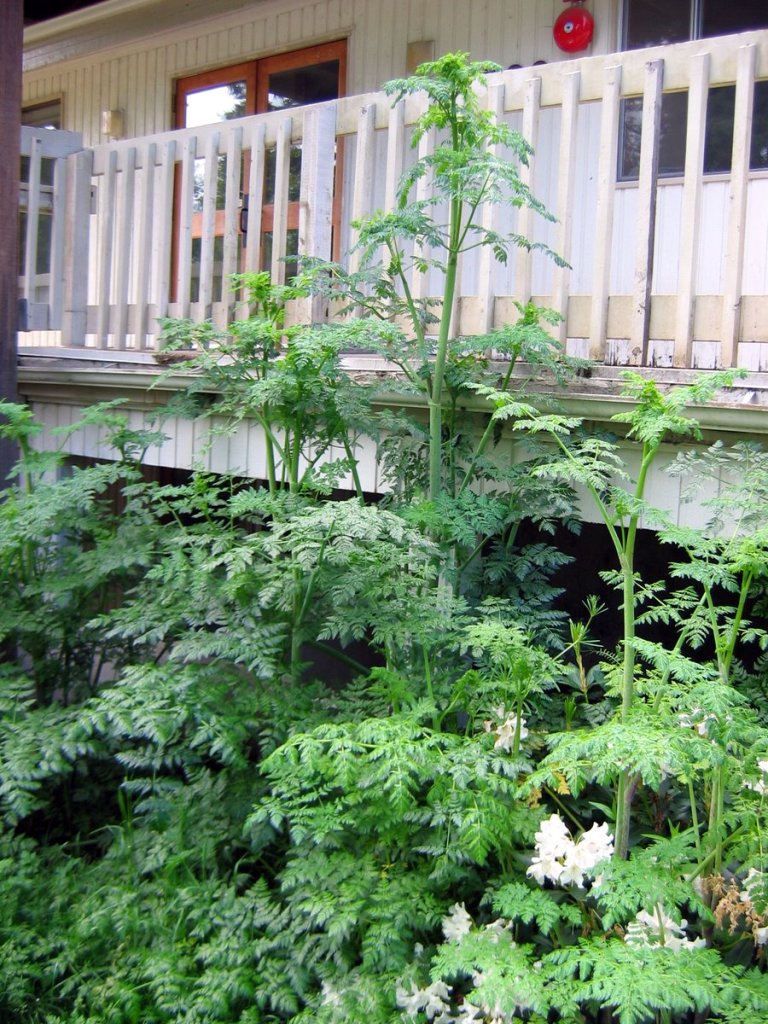

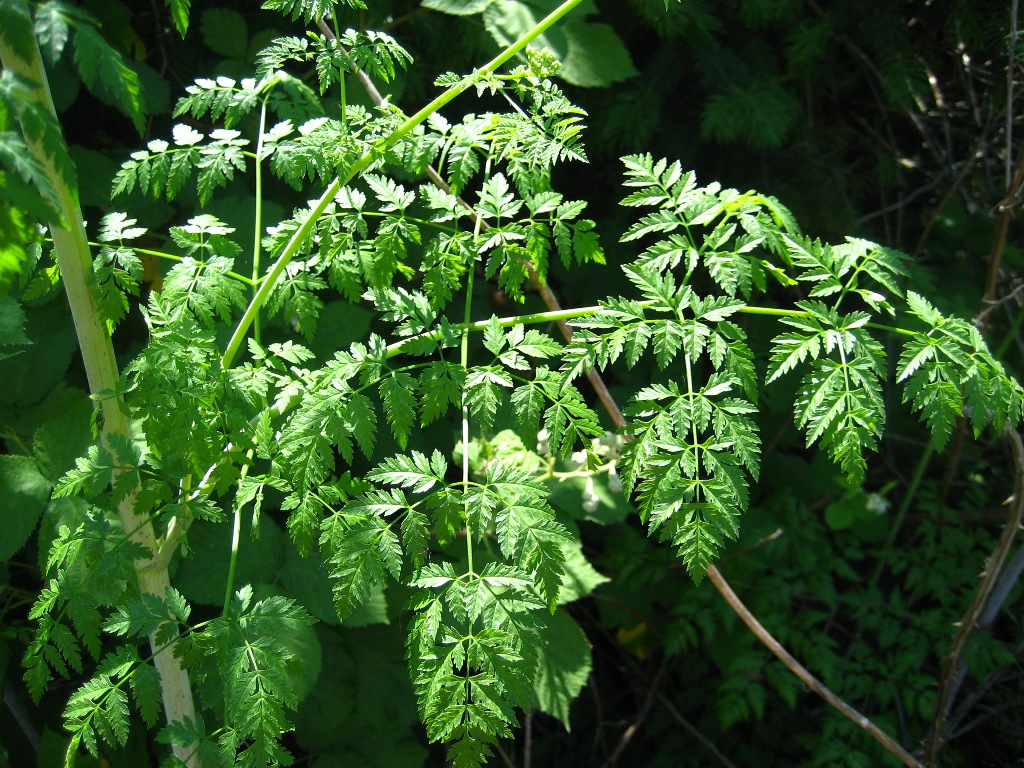
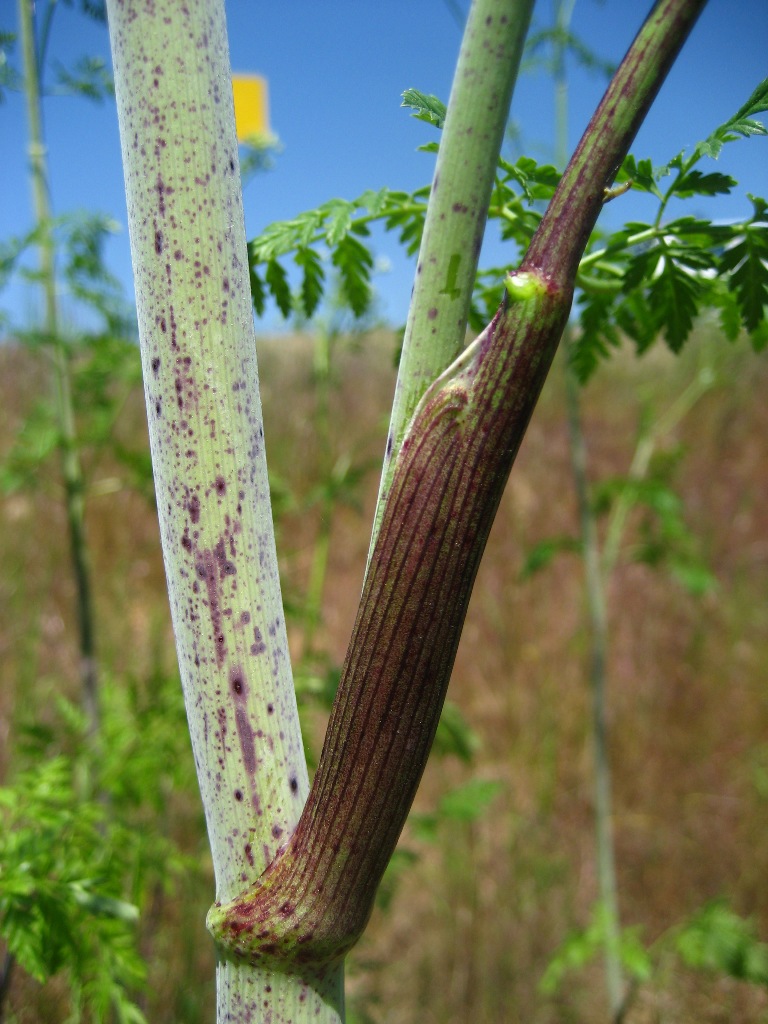
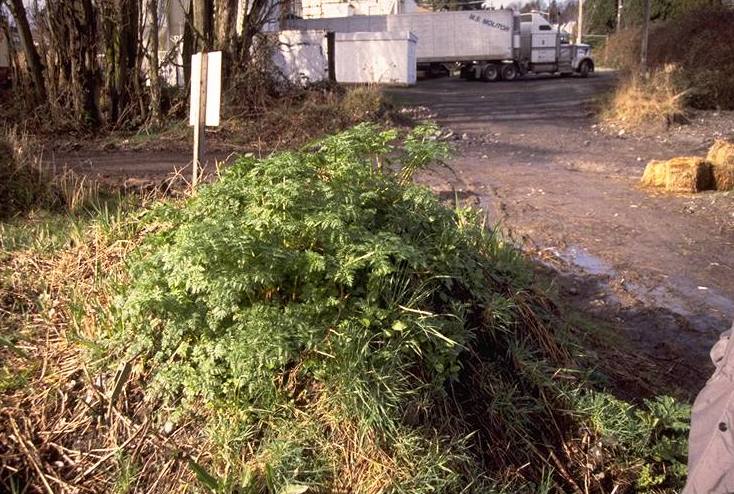
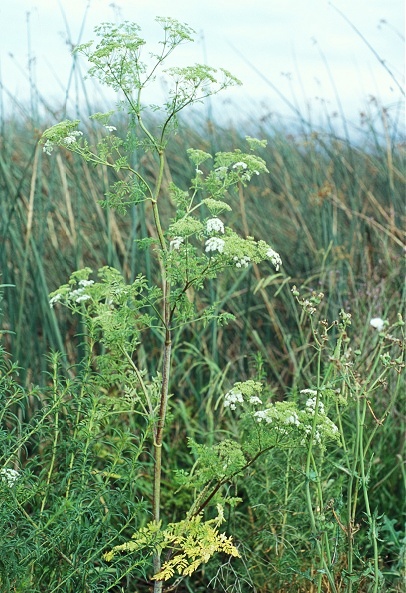
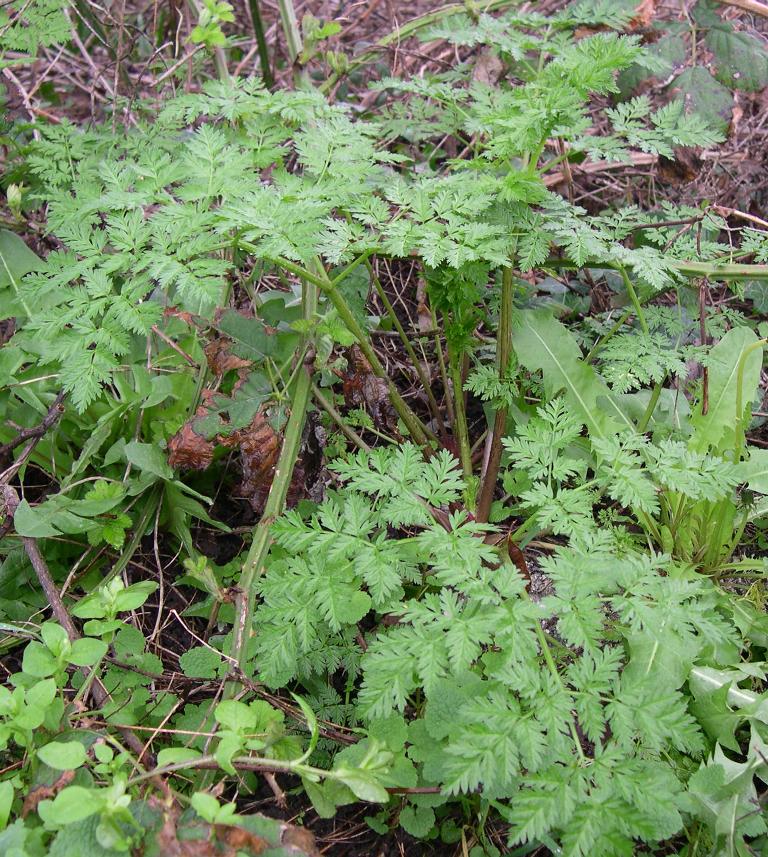
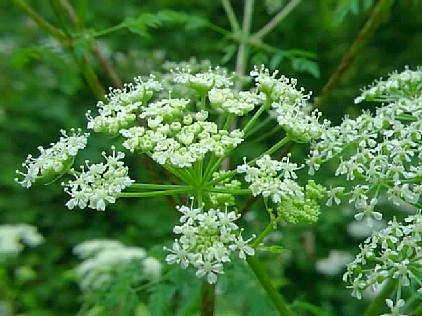
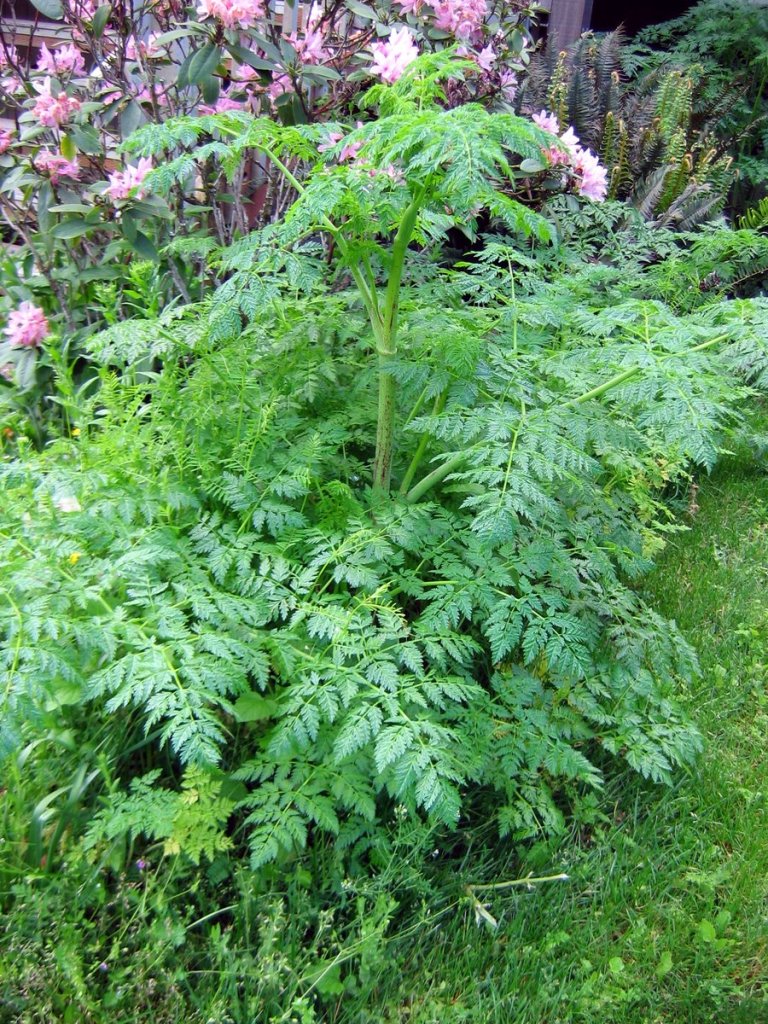
Report poison-hemlock in King County, Washington
- Please notify us through our online infestation form
Related information
Related agencies
Program offices are located at 201 S. Jackson St., Suite 600, Seattle, WA 98104. To contact staff, see the Noxious Weed Control Program Directory, send an email, or call 206-477-WEED (206-477-9333).

 Translate
Translate